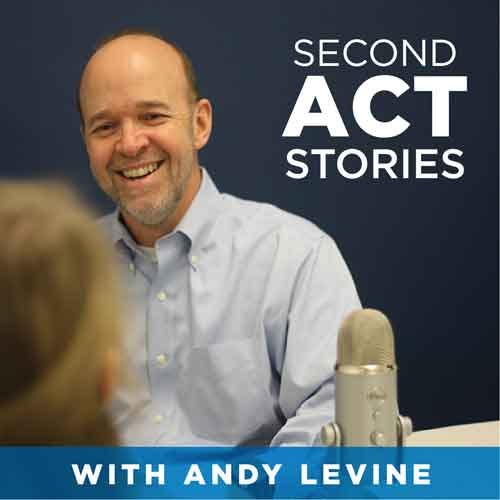New tax law could create tax underpayment headache for retirees
This is a sample edition of the subscription RetirementRevised.com newsletter. I hope you’ll consider subscribing - learn more about the newsletter and sign up here!
With best regards,
Mark Miller
 New tax law means retirees need to review tax withholding and quarterly payments
New tax law means retirees need to review tax withholding and quarterly payments
The Tax Cuts and Jobs Act of 2017 (TCJA), signed into law by President Trump last December, made important changes to tax rates, brackets, deductions and exemptions that affect all taxpayers. But retirees need to pay special attention to income coming from tax-deferred retirement accounts, pensions and annuities. The amount of total income tax owed could be going up or down, depending on a household’s personal circumstances.
Failing to pay the right amount through the year could subject retirees to a penalty next April when her federal income tax return is filed. The penalty is determined by multiplying an interest rate, determined by the IRS, by your underpaid amount; the current interest rate is 5 percent. Taxation of retirement income by states is all over the map, but state tax returns also could be impacted depending on where you live.
The IRS issued a bulletin earlier this month urging retirees to do a check-up on amounts that are withheld or paid in quarterly installments. Taxes are due throughout the year, either through quarterly estimated payments, or through withholding by pension plan sponsors or annuity providers. Taxes also are owed on Social Security.
Retirees might need to increase or reduce the amount of tax being paid during the year - and there is still time to make an adjustment before the year ends.
As a general matter, there are three ways to avoid underpayment penalties, advises Greg Rosica, partner in EY’s private client services practice in New York City. One: base payments on the prior-year taxes and pay at least 100 or 110 percent of that amount. Two: project the amount owed for the current year and pay at least 90 percent in four quarterly installments. (The final quarterly payment for 2018 is due on Jan. 15, 2019.) Three: annualized income installment. This method is used by taxpayers who receive uneven levels of income throughout the year; this approach smooths the amount owed quarterly using a reasonable estimate of income for the year. For more on this, see Chapter Two of IRS Publication 505.
For retirees who receive a monthly pension or annuity check, this may mean changing the amount of federal income tax withheld.
If you are not sure whether your payments need to be adjusted, check out the IRS withholding calculator.
How universal life insurance is backfiring on retirees
Universal life policies were popular back in the 1980s and 1990s, but now they are coming back to bite retirees, reports The Wall Street Journal (subscription required).
Universal life policies include both insurance and a savings account that earns income to help pay future costs and keep premiums level. But a decade of historically-low interest rates have crimped the savings accounts. And, as the earliest customers hit their 70s, 80s and 90s, the cost of insuring their lives has soared.
The result, according to the WSJ, is a flood of unexpectedly steep life-insurance bills - some policy holders find they owe thousands of dollars a year to keep modest policies in effect. Some retirees are dropping policies on which they paid premiums for decades.
Signs of change at IBM after age discrimination accusations
Back in March, ProPublica reported that IBM had ousted an estimated 20,000 employees ages 40 or older in the past five years, in some instances using money saved from the departures to hire young replacements to, in the words of an internal company document, “correct seniority mix.”
This week, ProPublica follows up with a report that the tech giant is winding down an internal network of young employees that’s been cited in several legal complaints as evidence of the company’s bias toward younger workers:
IBM deployed several strategies to attract younger workers, establishing a digital platform catering to millennials, a blog called “The Millennial Experience,” a Twitter account, @IBMillennial, as well as creating the Millennial Corps, whose members company executives pledged to consult about major business moves. The Corps was featured in a 2016 FastCompany piece titled “These Millennials Have Become the Top Decision Makers at IBM.”
But company sources said this week that the internal millennial platform has had almost no entries in recent months and the only posting on the blog dates from at least a year ago. There have been no recent tweets from @IBMillennial. At least one of the Millennial Corps founders quoted in the FastCompany story about the network has left the company, as have several of those listed as Millennial Corps “ambassadors” on the internal platform.
IBM declined to comment to ProPublica.
 Quiz time: When are you eligible for Social Security spousal benefits?
Quiz time: When are you eligible for Social Security spousal benefits?
When are you entitled to Social Security spousal benefits? How are spousal and survivors benefits determined? How does the timing of a Social Security claim impact spousal and survivors benefits?
Two economists at the Rand Corporation wanted to know if beneficiaries understand these key features of Social Security, so they created a survey.
Most survey respondents got the answers wrong. On average, they were only correct on 33 percent of questions about spousal benefits and 32 percent on survivor benefits. Nearly one in five (18 percent) wrongly believed that someone who never worked can’t claim benefits even if his or her spouse is entitled to Social Security. Chris Farrell has the details at NextAvenue.org.
 Socially-responsible investing: A role in 401(k) plans?
Socially-responsible investing: A role in 401(k) plans?
ESG is a hot acronym - Environmental, social and corporate governance. ESG has experienced dramatic growth in the past few years, but most of the momentum has been generated by institutional and high-net-worth investors. What could take socially-responsible investing to the next level? Workplace retirement plans.
Cracking the code on the 401(k) market would put ESG mutual funds squarely in front of workplace savers with smaller portfolios - and it is a giant market.
The evolution of ESG investment offerings has stimulated the recent growth. Early on, the market was characterized mainly by higher-cost active funds that used negative screening criteria to exclude specific investments (fossil fuels for example). But sophisticated ESG criteria have ushered in broad-criteria funds that select “best-in-class” securities across all industry sectors.
This approach opens up more potential for ESG to get a foothold in 401(K) plans. ESG investing is not likely to take off in workplace plans unless it fits into the broader model of the modern 401(k) plan, which centers around automation of asset allocation and behavioral finance features like auto-enrollment and auto-escalation.
Workplace retirement plan consultant Rick Unser explores the topic on his 401(k) Fridays podcast, with Sean Kenney of MFS Investment Management.
Separately, Financial Advisor asks the question: are advisors standing in the way of ESG investing by clients? The answer seems to be a qualified yes. (Hat tip: Michael Kitces).
Speaking of podcasts . . .
Have you checked out Andy Levine’s Second Act Stories podcast? Andy tells the stories of folks who have made significant changes in their lives; recent episodes include the leader of a Beat Cancer Boot Camp, a compulsive gambler who found a way to get back on his feet and Eva Levias Andino, whose life changed dramatically after her son came out of the closet.
That last one is a personal favorite. I interviewed Eva for my latest book, Jolt: Stories of Trauma and Transformation; Andy featured an interview with me about Jolt in July.



